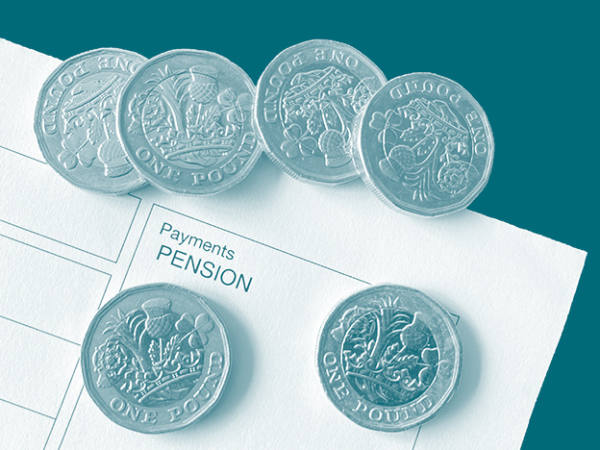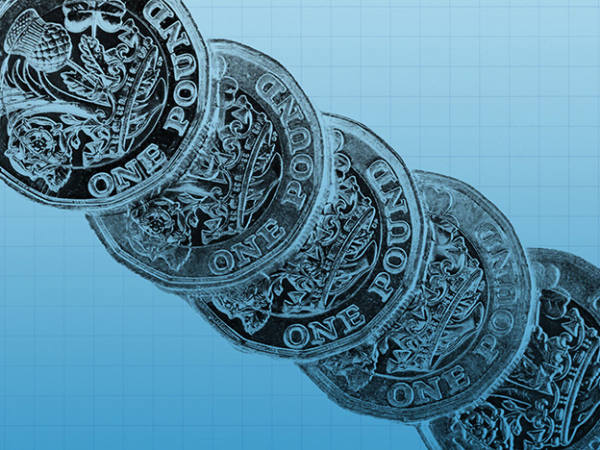- The government plans to abolish the pensions lifetime allowance from 2024
- Pension contributions will still be subject to annual restrictions
- It could be worth seeing the full detail of the legislation before resuming contributions
The government will abolish the pensions lifetime allowance (LTA), currently £1,073,100, from April 2024, and between 6 April this year and its abolition will waive any LTA charges due. This is welcome news if you are under 75, and saving into pensions whose value is likely to breach the limit or your pensions have already breached it meaning you were due to pay a charge at age 75 or sooner.
If you had stopped contributing to pensions to avoid breaching the LTA or because you had already breached it, you could consider resuming contributions after 6 April. Pensions are a tax-efficient way to build up money because assets within them can grow tax-free. If you are under age 75, your contributions get government tax relief at your marginal income tax rate of 20, 40 or 45 per cent. Workplace pensions also get contributions from your employer.
Besides enabling you to grow a pot of money for later life, pension contributions can also reduce what is counted as your taxable income, so can help to lower the amount of earnings on which you pay tax and bring you into a lower tax band. For example, if in the 2023-24 tax year you earn £130,000 a year and contribute £13,000 to a pension, you will receive pension tax relief of £5,239.50, which reduces your taxable salary to £112,930, after personal allowance deductions and tax relief. This will keep you below the new additional rate tax threshold of £125,140.
Reducing your taxable salary can also help to retain some or all of the £12,570 personal allowance for income tax, eligibility for free childcare and child benefit. And pensions fall outside your estate for inheritance tax (IHT) purposes so are an efficient way to pass money to future generations.
However, even when the LTA and charges for breaching it are abolished, other restrictions may prevent you from contributing to your pension or limit how much you can put in.
Will the lifetime allowance abolition be reversed?
The abolition of the LTA will not be a certainty until it is confirmed in a finance bill in 2024. The opposition party, Labour, says it will reinstate the LTA, except for doctors, if it wins the next election, which is due, at the latest, by December 2024. So the pensions LTA could be reinstated not long after its abolition.
However, if the LTA is reinstated, you might be able to protect what you have already built up, as has been the case previously, although not accrue on that basis going forward. So if you wish to build up your pension to fund your retirement you could consider taking the opportunity to do this over the next year or two. But advisers such as Michael Lapham, director at Mercer & Hole, argue that it might be sensible to wait to see the full details of the LTA abolition in the 2024 Finance Bill, including if you are a doctor.
Kay Ingram, a chartered financial planner, cautions against withdrawing pension funds before the next election because the LTA might be reinstated. “Unless planning to access a larger unprotected pension fund for immediate income needs in the next five years, it would be a mistake to base [your] retirement planning around a knee-jerk policy statement made on Budget day,” she says. “Retirees need to consider all aspects of taxation. When [pensions] are withdrawn, 25 per cent is usually tax-free but anything more than this is taxable.”
Money taken out of a pension is no longer in a tax-efficient environment. “If retirement is some way off, withdrawing funds prematurely to avoid a [possible] future LTA charge could be a mistake,” adds Ingram. “Generally, it makes sense to use up other savings first and leave pension pots invested for as long as possible, at least until the protected lifetime allowance value is reached.”
You have less choice on when to start receiving payments from a defined-benefit pension. You can “request early retirement, but this will be at a cost [of a lower level of payout],” explains Ingram. “Whether giving up a higher lifetime income to avoid a [possible] one-off tax charge is wise, is debatable.”
Other limits on pension contributions
Although there will be no LTA charges from 6 April other limits to pension contributions remain. There is a limit on how much you can contribute to pensions each year. From 6 April, this is £60,000 or the value of your earnings, whichever is less. If you have used up a current tax year’s annual allowance you may be able to carry forward unused allowances from the previous three tax years, although to do this you must earn at least the amount you wish to contribute in the same tax year. You also need to have been a member of a UK-registered pension scheme in each of the tax years from which you wish to carry forward unused allowances, although do not need to have made contributions. So a retirement saver could contribute as much as £180,000 to a pension in 2023-24 if they have the necessary allowances and income.
“Carry forward can aid individuals, such as business owners whose profits and income are not consistent [from year to year],” says Lapham.
For example, if you earned nothing in the 2022-23 tax year but £100,000 in the 2023-24 tax year, you could contribute up to £100,000 to a pension using the 2022-23 £40,000 annual allowance and 2023-24 £60,000 annual allowance.
From 6 April, higher earners whose threshold income is over £200,000 and adjusted income is over £260,000 will have their pensions annual allowance tapered by £1 for every £2 of adjusted income more than £260,000 until £360,000, so that those earning this amount or more will only have a pensions annual allowance of £10,000 a year. But they might be able to carry forward allowances from the previous three tax years.
If you have started to withdraw money, other than your tax-free lump sum, from a defined-contribution (DC) pension, you are likely to have triggered the money purchase annual allowance, which will restrict the amount you can contribute to a pension to £10,000 a year from 2023-24.
If you are a non-earner, you can only contribute £2,880 to a pension each year, which government tax relief takes up to £3,600. So, for example, if your pensions' value is in excess of the LTA of £1,073,100, and you are under age 75 and retired, you could still only add up to £3,600 each year. Pensions, rental and dividend income do not count as earned income.
Ingram adds that it also may not make sense for you to put more money into pensions if you “already have enough to fund [your] retirement, and have other priorities such as passing money to younger generations or repaying debt.”
Cash cap
At present, you can take up to 25 per cent of DC pensions tax-free unless their value exceeds the LTA, in which case the tax-free amount you can take is a quarter of the LTA. So in the 2022-23 tax year this is £268,275. But although the LTA is set to be abolished, the amount of tax-free cash you will be able to take will remain at £268,275 unless you have some form of protection (see below).
So if you pile more than £1,073,100 into a pension, less than a quarter of it will be tax-free and the real-terms value of the tax-free part will decrease over time. You are liable for tax at your marginal rate on withdrawals in excess of the tax-free cash. The personal allowance for income tax means that the first £12,570 of income you earn is tax-free, but when you start to receive the state pension this is likely to use up most of your personal allowance. For example, from 6 April the full new state pension pays out £10,600 a year.
So when planning your sources of retirement income, still consider individual savings accounts (Isas) as you can withdraw from these tax-free, although do not get tax relief on contributions to them.
Protected cash
When the pensions LTA was introduced in 2006, and reduced in 2012, 2014 and 2016, protections were introduced to preserve what savers had built up under the rules until those points. These included larger tax-free sums – for example, Fixed Protection 2016 allows you to take tax-free cash worth up to 25 per cent of the value of your benefits or the LTA in 2016, whichever is lower, so a maximum of £321,500. But the protections are subject to a number of terms and conditions, so if you have enhanced protection, or Fixed Protection 2012, 2014 or 2016, you have not been able to save into a pension after certain dates. If you resumed contributions, you lost the protection.
However, if you registered for enhanced or fixed protection before 15 March 2023, from 6 April you can resume contributions to pensions and retain your existing tax-free cash entitlement.
With enhanced protection, this will be capped at the amount you could take on 5 April 2023. This means that none of the growth in your pensions after this date, whether from contributions or investment growth, can be withdrawn as tax-free cash but rather as taxable income.
With fixed protection, contributions after 6 April 2023 can be included for the purposes of calculating the tax-free sum the pension holder is entitled to, although this is also capped at a level depending on which protection they have.
“Individuals with enhanced protection are going to have their tax-free cash capped from 5 April,” says Lapham. “The number of people it will affect is likely to be limited, given that enhanced protection had to be applied for by April 2009 and most of those individuals will have taken their tax-free cash by now. It does affect those who have left their pension tax-free cash and never drawn [since] that time.”
But he argues that rather than resume contributions it would be better to hold fire until we see the detail, which may not be given until next year.
“We don't yet know whether other restrictions will be introduced as part of next year’s Finance Bill,” adds Ingram. “And while HM Revenue & Customs (HMRC) has stated that restarting contributions will not jeopardise these protections, a change of government could see the policy reversed.”
Due to the lack of clarity on the details of the LTA abolition, and because retirement planning comes down to a number of variables and factors unique to yourself, it is worth getting professional advice on whether to resume payments into pensions and how best to save for your retirement.











